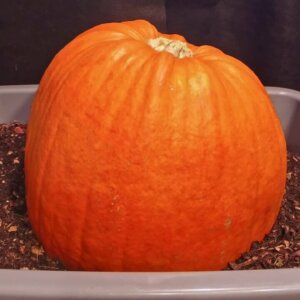I don’t expect the pop culture version of the world to bear much resemblance to the real thing. It exists to distract and entertain, of course, and in doing so, must grab our attention for as long as possible and by any means necessary.
But even when we admit our disbelief is suspended (as we stare at the antics of those flickering screens), the stereotypes and imagery have a funny habit of burrowing into our minds and rooting there.
Watch The Video
As a result, homesteaders face their share of strange misconceptions when watching pop culture representations of their lives. Sometimes, it’s funny to compare our experiences of homesteading reality with the flat screen cutouts that movies, shows, or video games hold up. Other times it can be frustrating as we realize that our friends or family in the city believe those images are anywhere close to an accurate representation. As someone living this life, all I can tell you is that being misunderstood is par for the course. Not everyone will understand why we do what we do unless they’re living the life themself.
So we may as well laugh a little at the homesteading myths and cliches. With that said, let’s take a look at a handful of details about homesteading life that pop culture gets totally wrong.
1. Hay Piles

One of the most iconic elements of the “Assassin’s Creed” series is the leap of faith, where the likes of Altair and Ezio fling themselves from the heights of historical landmarks and land safely on the ground below (with accompanying eagle sounds, of course). The key to the eponymous assassin’s survival is landing in a conveniently located, shock-absorbing haypile.
These life-preserving stacks of grass are also excellent locations to hide, concealing the player’s character within a second. We willingly go along with the adventure, of course, because the stories are fascinating, the protagonists are intriguing, and there’s nothing like a heroically dramatic, Templar-evading exit to round out a cops and robbers chase.
Those of us who deal with actual hay piles would never launch ourselves into them, though. True, loosely-piled hay is springy to walk on, but a real haystack is surprisingly dense and solid. These fodder-keeping structures are the barn’s so-called root cellar, keeping food for the larger livestock dry and edible well through the cold winter months. And they’re packed tight. In order to fit as much food for the stock as possible, many old-time hay piles were densely, strategically, and expertly arranged to both stay dry and shed water.
2. Chickens

With the way they are represented, the ubiquitous chicken is one of the most poorly-understood creatures in Hollywood. I’d give bald eagles a close second, as they are always shown soaring and screeching with the borrowed, bold call of a red-tailed hawk and not their authentic, somewhat uninspiring squeaky chitter.
Take, for instance, the chickens in the “Legend of Zelda.” Of course, we accept their ridiculous antics are (indeed) ridiculous, and readily convert it to pop culture lore with a nostalgic grin. Nevertheless, the chickens in this long-running series have been endowed with characteristics that far exceed the natural abilities of any barnyard hen. If you hold a bird over your head, you’re more likely to get pooped on than float safely away to the ground from a height. And if you were to hit a hen with a sword, the rest of the flock would probably just cluster around the rooster in fear of you, rather than mass in a coordinated attack to send you to the death screen.
Thankfully, real chickens are a lot nicer than the death-dealing poultry of the franchise. Some are downright cuddly, such as the floofy Cochin or the gentle Orpington. As you’ll see in our helpful Chicken Breed Database, if it’s a feathery pet or docile, kid-friendly bird you’re hoping for, there’s a breed out there that will fit the bill … er, beak.

I’ll also extend an honorary mention to the chickens of “Red Dead Redemption 2.” The game is rightly renowned for its absolutely gorgeous panoramas and acute attention to historical detail, representing the 1890s western landscape in a complicated, immersive story. But there’s a singular detail to this game that tells me some of the folks at Rockstar Games don’t have chickens of their own. As Arthur gallops across the plains and mountains, he often passes homesteads, and every once in a while, no matter what hour of the night, those familiar fowl are out scratching and pecking. As those of us with coops in the backyard know, no chicken worth its salt would ever linger outside after sundown
3. Foraging

I bequeath the 2004 film “Into the Wild” with the award for most erroneous representation of foraging. The storyline of the film itself is a fascinating look into the mind of a young man disenchanted with his upbringing and longing for a more meaningful life — something many of us can relate to, even if we don’t run away to Alaska. The well-known ending of the story is, however, that Chris McCandless dies in an abandoned bus, alone and despairing.
The film is based on a tragic true story. But the cause of McCandless’ death has been completely synthesized and rewritten. Though the true nature of his death is somewhat shrouded, it’s likely that he died of starvation. In the film, however, Chris dies from ingesting a wild plant that the film deliberately wrote to be poisonous for the sake of their story. They even went so far as to write a falsified entry in the real-life plant guide Chris reads in the film though the actual book bears no such toxicity warning for the plant in question.
As someone who uses foraged plants and mushrooms for hundreds of my meals every year, I get frustrated at the Hollywood wild food boogeyman that haunts my conversations with folks who don’t forage. Because of deliberately sensationalized moments in films like this one, they believe I’m playing a botanical game of Russian roulette when I head out with my basket — rather than collecting nutritious and safe foods.
For those interested, a much more thorough and well-written critical essay on the foraging aspect of the film in question can be found in Samuel Thayer’s book “Nature’s Garden” (the essay is available to read at this link). For those interested in learning how to forage with knowledge and no fear, I humbly recommend our video and article on the basics of getting started.
4. Backwoods Hicks

When I first moved to the country, the people I left in the city immediately began asking if talking to my neighbors felt like reliving a scene from “Deliverance.” I’m decidedly not a movie buff and never saw the film, but from the way they talked, it seemed they thought a rural community only picked banjos on their porches and had disturbing affections for pigs. Eventually, I looked up the 1972 film on IMDB, and realized I was glad I’d never seen it.
Now, I’m not here to hate on a decades-old film that I still haven’t seen. But I am curious about these strange touchstones that add to the cultural zeitgeist of historical, self-sufficient rural folks. They’ve been given a pretty dirty turn in popular films. They’re often written as toothless, inbred, unintelligent people, closer to animals than real, modern humans. I suppose this cliche is to make us feel like we’ve advanced far beyond scratching in dirt for our food, since we can now boop a phone app to make it appear on the front porch instead.
One interesting thing about “Deliverance” is that it was filmed in Rabun County, Georgia, a rural Appalachian community full of the very sort of country folk that supposedly populated the horror film. If you’re familiar with the “Foxfire” series, you’re already aware there’s a far more accurate representation of the self-reliant communities of Rabun County to be found.
I recommend the first three or four books in the series. They are full of interviews with the mountain residents who truly knew how to live on their own land. Sure, the elderly folks they interview may be missing a few teeth and may talk in a manner seemingly quaint to modern ears, but I would gladly trade my college degree for the knowledge of how to grow and preserve food through like they did.
5. Scythes

My brother-in-law once told me that his favorite weapon in “Dark Souls 3” was some sort of deadly-designed scythe. I couldn’t help but laugh, however, at the thought of this graceful, gentle tool as the weapon he described in the game. “Dark Souls” isn’t the only culprit in scythe assumption, however. The giant, razor-sharp blade on the original lawnmower undoubtedly inspires awe in those who have never handled one. It looks like it would and should deal damage with ease. But the fact is, a scythe blade is a finely-honed, delicate instrument, and you would never swing it around or over your head like the characters in video games.
Scythe blades never slice through the air. They skim a few inches off the ground, held horizontally, and shearing grass blades as easy as a thought. The sight of a person using one skillfully looks as graceful as a dance. Furthermore, the long blades can be easily damaged by running into stones or hard objects — something that the true scythe-wielder dreads.
When it comes to self-defense or battle, pretty much any other garden tool would be a better weapon than a scythe. But when it comes to blissfully quiet hay cutting or gas-free prairie grass maintenance, you could do no better than a scythe.
6. Homestead Daily Life
Cable television shows like “Mountain Men” or “Homestead Rescue” have a job to do: They want to entertain you for a set amount of time. To do so, they need to have some sort of problem for their rural, off-grid stars to face like bear attacks, blizzards, floods, or roads blocked by fallen trees. The general tone seems to be that these hard-living folks are fighting tooth and nail to cling to existence in their wild homesteads, always preparing for the next disaster and not having to wait long for it to arrive.
The reality of homestead daily life is, however, that though it’s full of hard work, it’s often peaceful and enjoyable. That’s why we choose this life, after all. Sure, there’s the occasional sick chicken, escaped goat, or hornworm-chewed tomatoes, but there’s also a whole lot of good, wonderful, quiet, or satisfying days. A day spent mending fences, milking goats, tending the garden, and gathering fresh eggs may not make for exciting television, but it does make for good living.
Since I’m an off-grid homesteader, I don’t like to spend much time vegging out in front of my nonexistent screens. I know I’ve missed out on plenty of other examples. But I’d love to hear from you. Where have you found the mass media representation of homesteading myths totally, hilariously, or frustratingly wrong? Share some examples below and we can all have a laugh in solidarity.









































Leave a Reply